e46 automatic to manual swap
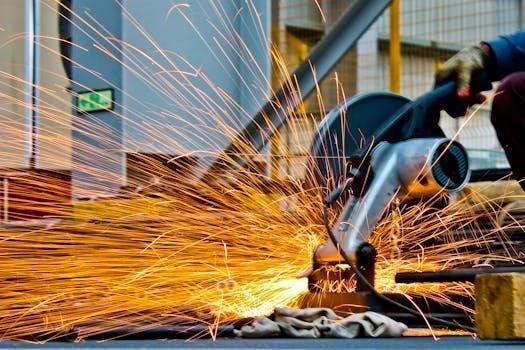
Overview of E46 Automatic to Manual Swap
The E46 automatic to manual swap is a popular modification, often chosen to improve driving experience. Many enthusiasts find it a rewarding project, although it requires careful planning and execution. The conversion maintains the possibility of a return to stock form.
The automatic to manual transmission conversion for the BMW E46 is a significant undertaking, involving both mechanical and electrical modifications. This swap replaces the existing automatic gearbox with a manual one, typically a five or six-speed variant. The process requires meticulous planning, a good understanding of vehicle mechanics, and access to the necessary tools and parts. Many enthusiasts undertake this project to enhance their driving experience and gain more control over the vehicle’s performance. The conversion also often serves as an alternative to repairing or replacing a problematic automatic transmission. While not a simple bolt-on procedure, with thorough preparation and attention to detail, it is feasible for experienced DIYers or by professional automotive technicians. The goal is to seamlessly integrate the manual transmission with the existing E46 chassis. The entire process can take a few days, with all factory parts retained to ensure a possible return to stock form in the future.
Reasons for Choosing a Manual Swap
Several reasons drive E46 owners to opt for a manual transmission swap. The primary motivation is often the desire for a more engaging driving experience. Manual transmissions offer greater control over gear selection, allowing drivers to better manage engine power and responsiveness. This is particularly appealing to those who enjoy spirited driving or track days. Additionally, automatic transmissions in older E46 models can become unreliable and expensive to repair. A manual swap can be a cost-effective alternative to a complex automatic transmission repair or replacement. Moreover, the manual transmission is often favored for its simplicity and durability, potentially reducing future maintenance costs. Finally, for some, the manual transmission provides a more authentic and classic driving feel, enhancing the connection between the driver and the vehicle. With the rising price of manual E46 models, a swap can be a viable path to obtaining a car with the desired transmission.
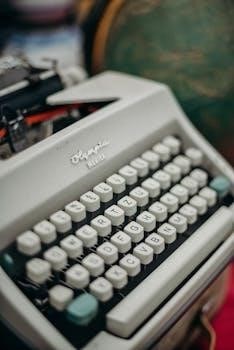
Parts Required for the Swap
The swap necessitates specific components, including a manual transmission, clutch, flywheel, and related hardware. It’s also crucial to have the correct bushings, bolts, and shift linkage parts to ensure a successful conversion.
Essential Manual Transmission Components
The core of any automatic to manual conversion revolves around the manual transmission itself. This includes not just the gearbox housing but also its internal mechanisms like the gears and shafts. A crucial part of this is the bellhousing, which must be compatible with the E46 engine. Furthermore, the clutch assembly, consisting of the pressure plate, friction disc, and release bearing, is essential. A manual flywheel, different from the automatic version, is also required. The shifter assembly, including the lever, selector rod, and shift arm, are integral for enabling gear changes. Don’t forget the necessary bushings, grommets, and tunnel bracket to secure the shifter properly. These parts should ideally be new or in excellent condition to ensure smooth and reliable operation.
Additional Parts and Hardware
Beyond the core transmission components, several additional parts and hardware pieces are crucial for a successful E46 automatic to manual swap; The driveshaft, which connects the transmission to the differential, is a must and needs to be the correct length for a manual setup, as it differs from the automatic one. Also, ensure that you have the proper bolts for mounting the transmission to the engine, as well as new driveshaft bolts, since these are often single-use. The crossmember might need to be replaced with a manual-specific version, particularly if you’re using an M3 transmission. You’ll need the correct manual transmission bushings and also keep in mind the need to source parts such as the shift boot, the gear knob and possibly a new reservoir feed line. It is also wise to consider replacing parts like the shift linkage bushings to ensure that you have a smooth shift.
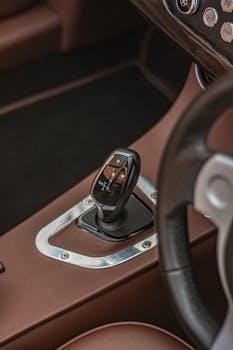
Step-by-Step Conversion Process
The E46 automatic to manual conversion involves detailed mechanical work and electrical adjustments. Following a structured process is essential for achieving a successful and reliable manual transmission swap. Careful attention must be paid to each step of the conversion.
Mechanical Aspects of the Swap
The mechanical portion of the E46 automatic to manual swap requires meticulous attention to detail, involving the removal of the automatic transmission and installation of the manual gearbox. This includes replacing the automatic transmission with a manual one, along with the associated components like the clutch, flywheel, and pedal assembly. You will need to replace bushings and bolts holding the transmission to the engine because they are often one-time use. The driveshaft bolts also need to be replaced, and the shift linkage should be new. The clutch and flywheel should also be new, as resetting the pressure plate can be more expensive than buying new parts. The correct crossmember should be installed, which is the E46 M3 crossmember for an M3 transmission. The manual transmission driveshaft needs to be installed, connecting to the flex disc first, and the transmission lines and cooler must be addressed.
Wiring and Electrical Considerations
The wiring and electrical aspects of the E46 automatic to manual swap are crucial for a successful conversion, and these should be carefully addressed. The reverse signal, which is a simple voltage controlled by the reverse signal switch on manual gearboxes, needs to be considered. On automatic transmissions, the reverse signal is transferred from the EGS to a voltage signal via a relay. The automatic transmission control unit needs to be removed or bypassed. This requires understanding the E46’s electrical system and how it handles the automatic transmission signals. A plug-and-play wiring harness is often used to make these connections easier, and you may need to code or remove the auto transmission from the vehicle’s FA; Ensuring all wiring connections are secure and correctly routed is essential for avoiding electrical issues post-swap.
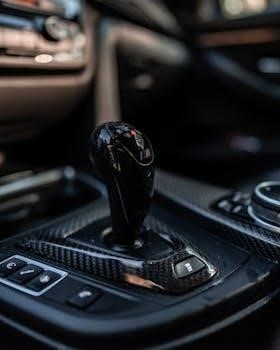
Post-Swap Adjustments and Considerations
After the manual transmission swap, adjustments are essential, this includes coding and software modifications. Addressing potential issues is critical for a smooth transition. Attention to detail ensures optimal performance after the conversion.
Coding and Software Adjustments
Following an E46 automatic to manual transmission swap, coding and software adjustments are crucial for proper vehicle operation. The original automatic transmission control unit (TCU) needs to be deactivated or removed from the vehicle’s configuration. This step prevents error messages and ensures the car’s systems function correctly with the new manual setup. The vehicle’s ECU needs to be reprogrammed to reflect the manual transmission, adjusting parameters related to gear selection and shift points.
Software adjustments include modifying the vehicle order (VO) or FA in the ECU, removing the automatic transmission option and adding the manual one. This process may require using diagnostic tools and software like NCS Expert. Coding also involves adapting the instrument cluster to correctly display gear position, if applicable, and remove any automatic-specific indicators. Incorrect coding can lead to various issues, including engine performance problems, error codes, and dashboard warnings. Careful coding is necessary to guarantee a seamless transition from automatic to manual.
Addressing Potential Issues
After an E46 automatic to manual swap, several potential issues might arise requiring troubleshooting. One common problem is error codes related to the removed automatic transmission system, often stemming from incorrect coding. The reverse light wiring may need adjustments to function correctly with the manual gearbox’s reverse signal switch. Another potential issue is the driveshaft, which can be of different length between automatic and manual models; confirming proper fitment is key.
Furthermore, the differential ratio may not be optimal after the swap, which could affect acceleration and fuel economy, so it’s important to research recommended diff ratios. There could be concerns regarding clutch pedal travel, master cylinder issues, and the correct installation of the clutch hydraulic system components. It is also possible to encounter issues with a used manual transmission, thus ensuring the used unit is working properly before installation is important. Thoroughly checking and addressing any mechanical and electrical issues after the swap is essential for smooth operation.
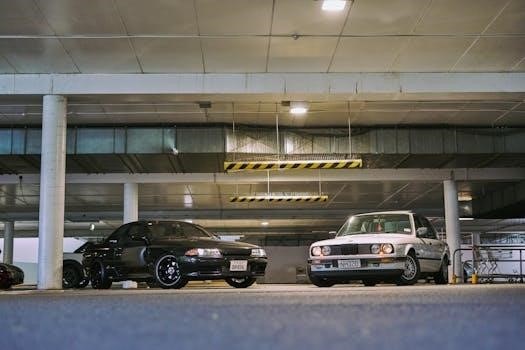
Cost and Feasibility
The cost of an E46 automatic to manual conversion varies significantly, depending on parts sourcing and labor choices. DIY conversions can be more cost-effective. However, professional installation can incur higher expenses but provides expertise.
Estimating the Total Cost
Estimating the total cost for an E46 automatic to manual swap requires careful consideration of several factors. The price of a used manual transmission is a major element, and can fluctuate significantly based on condition and source. A complete manual conversion kit, which includes essential components like the shifter, linkage, and associated hardware, can also impact the budget. The cost of a new clutch and flywheel is a must, because used components are not recommended, unless special tools are used to reset the pressure plate. Additional expenses will come from the new transmission mounts, driveshaft bolts, and bushings. Also, consider the cost of fluids, and other new wear parts, such as bushings and bolts. Labor costs, if you choose professional installation, will be a significant factor, often exceeding the cost of parts. Lastly, don’t forget the coding and software adjustments, and potential unforeseen expenses. Thorough research and planning are crucial to accurately estimate the total cost.
DIY vs. Professional Installation
Deciding between DIY and professional installation for an E46 automatic to manual swap is a crucial step. A DIY approach can significantly reduce costs, but it demands a solid mechanical understanding, proper tools, and time. DIY projects can be rewarding, but also present unforeseen challenges. Utilizing online guides and forums can provide valuable assistance during the process. Professional installation, on the other hand, offers the advantage of expertise, speed, and a guarantee of proper execution. However, labor costs can substantially increase the overall expense. For those less experienced with automotive work, professional installation may be the safer option to avoid costly mistakes; The choice hinges on your comfort level, available resources, and the potential risks associated with each approach. The main factor is the time spent on research and learning before starting the swap, which can save money.